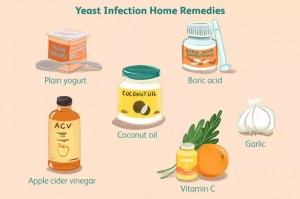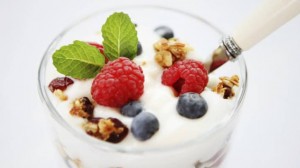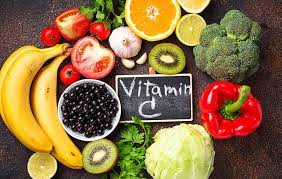Home remedies for a yeast infection present a treatment option for the burning and itching that happen when too much Candida yeast is produced in the vagina. Yeast infections are common, and most people with vaginas will experience at least one in their lifetime.
However, it’s important to get the right diagnosis before trying a home remedy or over-the-counter (OTC) product. Other types of infections like bacterial vaginosis, sexually transmitted diseases, and urinary tract infections can be easily mistaken for yeast infections. They need to be treated differently.
This article presents 10 home remedies you can try, though you may need OTC creams or a prescription antifungal. It also explains why they may work, as well as other remedies that remain unproven.

Baking Soda
Baking soda may help with yeast infections. Researchers have long found that sodium bicarbonate, or baking soda, can help with other health conditions, including digestive problems and oral hygiene.
Some studies also have shown sodium bicarbonate to prevent Candida yeast growth. Baking soda solution has a comparatively high (alkaline) pH, while the vagina is an acidic environment. Baking soda baths or washes may alter the acid-base balance so that the vagina is a less favorable place for yeast and other infections to grow.
Researchers also continue to develop products, such as a sodium bicarbonate gel, that may be used to treat these common vaginal yeast infections.
Yogurt

Eating plain yogurt without sweetener and with probiotic live cultures may help to prevent future yeast infections. Probiotics are live microorganisms that can be consumed for health benefits, especially for the digestive system.
Eating probiotic-rich foods can help to restore your gut flora back to a healthy balance, killing bad bacteria that lead to disease and increasing good bacteria.
A common side effect of antibiotics is a yeast infection, because antibiotics kill the bacteria in the vagina that is responsible for preventing yeast overgrowth. When the number of good bacteria is too low, yeast growth can become out of control and lead to a yeast infection.
Eating probiotic-rich foods like yogurt may therefore be an effective yeast infection prevention measure. It has yet to be proven whether eating yogurt can cure a yeast infection.
Boric Acid
Boric acid is a natural compound that has been found to have antifungal effects.It contains both probiotics and antioxidants to help the body restore its supply of good bacteria.
Studies have shown that boric acid is a safe alternative treatment for yeast infections, especially when traditional antifungal medication is not effective. Boric acid may be helpful if you experience chronic yeast infections and have been prescribed antifungals several times.
Roughly 10% of people with vaginas, who have at least three such infections in a year, fall into this category.
Boric acid usually comes in the form of a vaginal suppository, which is inserted into the vagina and should never be taken by mouth. Follow the package instructions and check with your healthcare provider if your symptoms do not improve.
Oil of Oregano
Oregano oil is an essential oil known for its health benefits. A 2016 study found that oregano oil was able to inhibit both the growth and activity of Candida albicans, the most common type of yeast that causes vaginal yeast infections.The essential oil was more effective at fighting yeast overgrowth than the prescription antifungal(clotrimazole).
In the study, oregano oil was more damaging to the cell wall of Candida yeast than the antifungal prescriptions tested. It should be noted that this study examined oregano oil’s effects on yeast in a lab setting. However, more research is needed to determine how to use oregano oil in the body.
Coconut Oil

Coconut oil has been found to inhibit the overgrowth of bacteria in the body. A 2018 study found that when dissolved in water, coconut oil was an effective antimicrobial agent.
This may be helpful for preventing yeast infections since infection occurs when the bacteria and yeast in the vagina become out of balance.
Coconut oil can be taken by mouth or mixed into foods such as oatmeal or baked goods. More research looking into how to use coconut oil to treat a yeast infection is needed.
Tea Tree Oil
Tea tree oil is a proven antifungal agent and is effective at fighting Candida albicans. A 2020 study found that tea tree oil was effective at fighting yeast that was resistant to antifungal medications.
Talk with your gynecologist if you’d like to incorporate tea tree oil into your treatment plan. Avoid placing the essential oil directly on or in the vagina or consuming it by mouth.
Apple Cider Vinegar
Apple cider vinegar has been found to have both antifungal and antimicrobial effects. This means that it may treat and prevent an overgrowth of both yeast and bacteria in the body.
In fact, apple cider vinegar has been found to be an effective yeast infection treatment in tough-to-treat infections that do not respond to traditional treatment.
Apple cider vinegar appears to work by inhibiting Candida from adhering to smooth surfaces. This can help to prevent a yeast infection because the yeast is unable to bind together and stay in the vagina.
Try mixing a spoonful of apple cider vinegar into a large glass of water each morning. Don’t attempt to use vinegar directly on your vagina.
Garlic
Garlic has antifungal properties and has been found to be effective at reducing yeast during a vaginal yeast infection. Studies have not found that garlic can prevent the infection, though.
Garlic can be consumed raw or in a concentrated supplement. Add garlic to your cooking or try an OTC garlic pill or oil. Follow the package instructions and check with your healthcare provider if you do not experience symptom relief within a few days.
Vitamin C

Vitamin C can do a lot more than help you get over the common cold. It has proven antimicrobial and antifungal properties and can be taken orally as a way to help fight yeast infections.
You can get vitamin C by eating leafy greens and citrus fruits. You could also take a vitamin C supplement.
Lemongrass
Lemongrass essential oil has been found to be effective at treating Candida albicans. It can be inhaled as a vapor. In a 2014 study, the vapor method was more effective at treating yeast overgrowth.
Internal consumption of this oil can be toxic, and should only be done under the supervision of a qualified healthcare professional.
Lemongrass oil also has a powerful anti-inflammatory effect. Cutting down on inflammation could help reduce the itching and burning associated with yeast infections.
Unproven Treatments
Home remedies for yeast infections may be worth trying. For example, adding apple cider vinegar or yogurt to your diet has health benefits.
However, keep those foods and supplements away from your vagina. A quick internet search yields dozens of unproven yeast infection treatments that can cause even more problems.
While yogurt is packed with probiotics, it’s also loaded with natural sugars that could feed yeast and make a yeast infection worse. Apple cider vinegar is acidic and can be very irritating to the skin. Another internet remedy involves douching with or bathing in a hydrogen peroxide-water mixture.
Hydrogen peroxide kills both yeast and bacteria, so while it may clear up a yeast infection, it could also put you at risk of developing another. This is because the good bacteria in the vagina prevent yeast from overgrowing. If those bacteria are killed by hydrogen peroxide, another yeast infection is possible.
When To Call Your Healthcare Provider
Home remedies for yeast infections should work within a week, as is the case with most OTC yeast infection treatments. If you are still experiencing symptoms, see your healthcare provider.
Your practitioner may be able to prescribe Diflucan (fluconazole), an antifungal oral medication that can usually treat a yeast infection in one dose. But if yeast infection treatment still isn’t working, it may be because you don’t have a yeast infection.
Bacterial vaginosis, sexually transmitted infections, skin disorders, and other conditions can sometimes present with similar symptoms to those of a yeast infection. Some of these infections can have serious complications when left untreated.
If you notice that you are experiencing frequent yeast infections, see your gynecologist. You may need a more long-term antifungal treatment to wipe out the infection and prevent future ones.
Post time: Aug-19-2022




